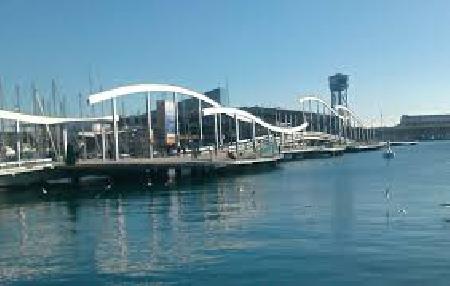 La Rambla de Mar was designed by Viaplana & Piñón, who created a wooden suspension bridge with a wavy pattern, symbolizing the connection of the city with the Mediterranean. For decades, Barcelona had turned its back on the sea and the expansion of the Rambla, completed in 1994, symbolizes Barcelona's renewed opening to the sea. La Rambla de Mar is not part of La Rambla but it is also worth visiting.
La Rambla de Mar was designed by Viaplana & Piñón, who created a wooden suspension bridge with a wavy pattern, symbolizing the connection of the city with the Mediterranean. For decades, Barcelona had turned its back on the sea and the expansion of the Rambla, completed in 1994, symbolizes Barcelona's renewed opening to the sea. La Rambla de Mar is not part of La Rambla but it is also worth visiting.
If you continue walking towards Port Vell, a wooden walkway, now known as the Rambla de Mar, will take you to the Maremàgnum, a complex with shops, cinemas -including an IMAX theater- and a large aquarium.
It is also an absolutely beautiful walk that will give you a wonderful view of Montjuïc and the lower part of the Barri Gòtic.
The creation of the Maremagnum in the mid-nineties revived the Barcelona seafront and allowed the Moll de la Fusta to remain connected to the Muelle de España, through a footbridge.
This walkway, known as the Rambla de Mar, has a wavy design because it rotates to allow ships to enter and exit the port.
For the people of Barcelona, it is a familiar image to see people standing in front of the traffic lights while the catwalk turns to let the boats pass.
La Rambla del Mar has places to enjoy the beach, and many terraces that border the sea

Barcelona Zoo
It is one of the most famous parks in Barcelona and this is due to its possession (Snowflake), a rare gorilla that died in 2003. It also inc